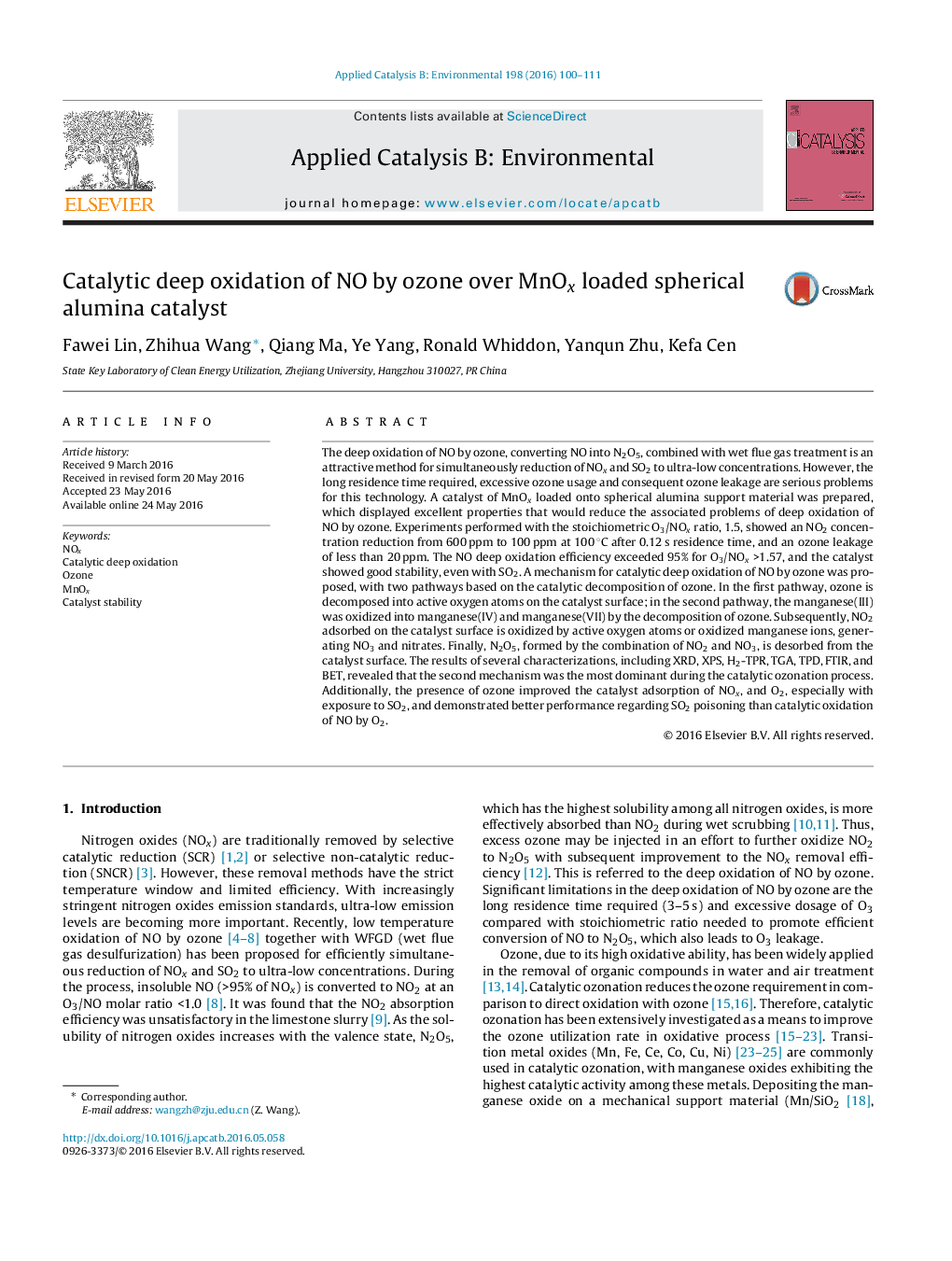| کد مقاله | کد نشریه | سال انتشار | مقاله انگلیسی | نسخه تمام متن |
|---|---|---|---|---|
| 44720 | 46344 | 2016 | 12 صفحه PDF | دانلود رایگان |

• Catalytic deep oxidation of NO by ozone over MnOx based catalyst was conducted.
• The presence of catalyst greatly improved N2O5 formation with less ozone.
• The catalyst displayed excellent stability and resistance to SO2.
• Ozone could enhance the catalyst adsorption of NOx and O2, especially with SO2.
The deep oxidation of NO by ozone, converting NO into N2O5, combined with wet flue gas treatment is an attractive method for simultaneously reduction of NOx and SO2 to ultra-low concentrations. However, the long residence time required, excessive ozone usage and consequent ozone leakage are serious problems for this technology. A catalyst of MnOx loaded onto spherical alumina support material was prepared, which displayed excellent properties that would reduce the associated problems of deep oxidation of NO by ozone. Experiments performed with the stoichiometric O3/NOx ratio, 1.5, showed an NO2 concentration reduction from 600 ppm to 100 ppm at 100 °C after 0.12 s residence time, and an ozone leakage of less than 20 ppm. The NO deep oxidation efficiency exceeded 95% for O3/NOx >1.57, and the catalyst showed good stability, even with SO2. A mechanism for catalytic deep oxidation of NO by ozone was proposed, with two pathways based on the catalytic decomposition of ozone. In the first pathway, ozone is decomposed into active oxygen atoms on the catalyst surface; in the second pathway, the manganese(ΙІІ) was oxidized into manganese(IV) and manganese(VII) by the decomposition of ozone. Subsequently, NO2 adsorbed on the catalyst surface is oxidized by active oxygen atoms or oxidized manganese ions, generating NO3 and nitrates. Finally, N2O5, formed by the combination of NO2 and NO3, is desorbed from the catalyst surface. The results of several characterizations, including XRD, XPS, H2-TPR, TGA, TPD, FTIR, and BET, revealed that the second mechanism was the most dominant during the catalytic ozonation process. Additionally, the presence of ozone improved the catalyst adsorption of NOx, and O2, especially with exposure to SO2, and demonstrated better performance regarding SO2 poisoning than catalytic oxidation of NO by O2.
Figure optionsDownload as PowerPoint slide
Journal: Applied Catalysis B: Environmental - Volume 198, 5 December 2016, Pages 100–111